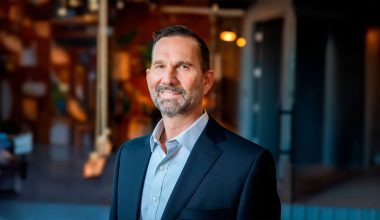In today’s business environment, defined by volatility, transformation, and talent as a top-line driver, Human Resources can no longer be seen as a reactive support function. It must be positioned as a strategic partner in business growth. Waveney Belle, an enterprise HR leader with more than two decades of experience inside Fortune 100 and 500 organizations, has helped organizations unlock growth by aligning people strategy with business strategy. Her perspective is clear: when HR leads with intention, it doesn’t just support the business, it accelerates it.
From Support Function to Strategic Driver
Belle has been at the forefront of the human resources evolution, helping to transform its role in modern business. For too long, Human Resources was viewed as a support function that was necessary, but peripheral. Belle has challenged and changed that narrative.
“We’ve always known talent is important,” she says, “but there’s real competitive advantage when HR is positioned to drive business outcomes, not just support them.” HR may not directly generate revenue, but it enables the soul of the organization, its people, to do so, by shaping the leadership, culture, workplace environment, and solutions that unlock performance. “HR leaders can’t simply react to new demands,” Belle emphasizes. “They must proactively co-create the conditions for success. That starts by leading with agility, clarity, and intention.”
From Process-Driven to Resilience-Ready
Global events like the pandemic, and the rapid acceleration of digital innovation, did more than disrupt the workplace. They redefined how organizations must think about resilience, leadership, and people strategy. “For a long time, HR was built for steady-state environments,” Belle explains. “The pandemic made it clear: HR is core to how companies adapt, pivot, and stay connected in times of uncertainty. It elevated the function and the expectations that come with it.”
Aligning Talent Strategy with Business Goals
Aligning talent strategy with business goals isn’t a reactive exercise, it’s the core of value creation. Belle believes that HR’s impact is maximized when it co-authors enterprise strategy, not just responds to it. “It’s not about hiring more people,” she says. “It’s about fully understanding the human capital value chain—how talent is acquired, developed, retained, and activated—and how those investments accelerate business growth.”
Translating Insight into Action
One of the powerful examples she shared comes from the financial services industry, where an insurance company sought to expand its sales footprint. Rather than jumping to hiring to new staffing targets, Belle partnered with business leaders to evaluate the root cause: Was this truly a growth opportunity, or a symptom of retention and capability gaps?
That shift in mindset led to a broader talent strategy, one that included onboarding enhancements, leadership development, and greater focus on retention efforts. “There’s a lot that happens beneath the surface,” she noted. “Do we have the right leadership skills? The right HR capabilities? It’s not about chasing headcount targets. It’s about organizational health.”
Leveraging Technology to Deliver Strategic Capability
Belle sees technology not as a threat, but as a multiplier and enabler that frees HR to focus on what matters most. “Why are our high-value talent performing so many low-value tasks?” she asks. Tools like AI and digital automation can handle repetitive administrative work, allowing HR to reallocate time and energy toward coaching, talent development, workforce planning, and business advisory. “AI helps us shift from working disproportionately in the business to working on it,” she explains. “It’s not just about efficiency—it’s about enabling HR to deliver strategic capabilities at scale.”
A Call to the C-Suite: Embed People Strategy into Business Strategy
Giving HR a seat at the table is no longer the goal, it’s the baseline. The real question is: How is HR shaping the future of the business from that seat? Belle believes strategic HR must be empowered to lead alongside the business, not after it. “It’s one thing to be invited into the room,” she says. “It’s another to be responsible for designing the future.”
Yet, that responsibility doesn’t rest with HR alone. CEOs must champion a talent-centric strategy as a business imperative. Boards must hold leadership accountable for talent outcomes. Then business leaders must model the agility, inclusiveness, and enterprise thinking that makes transformation real. “People drive performance,” Belle says. “And HR exists to make sure people thrive.”
To learn more and stay updated on how HR is shaping the future of work, learn more about Waveney Belle on her website or visit the Executive Edge website or follow her on LinkedIn.








